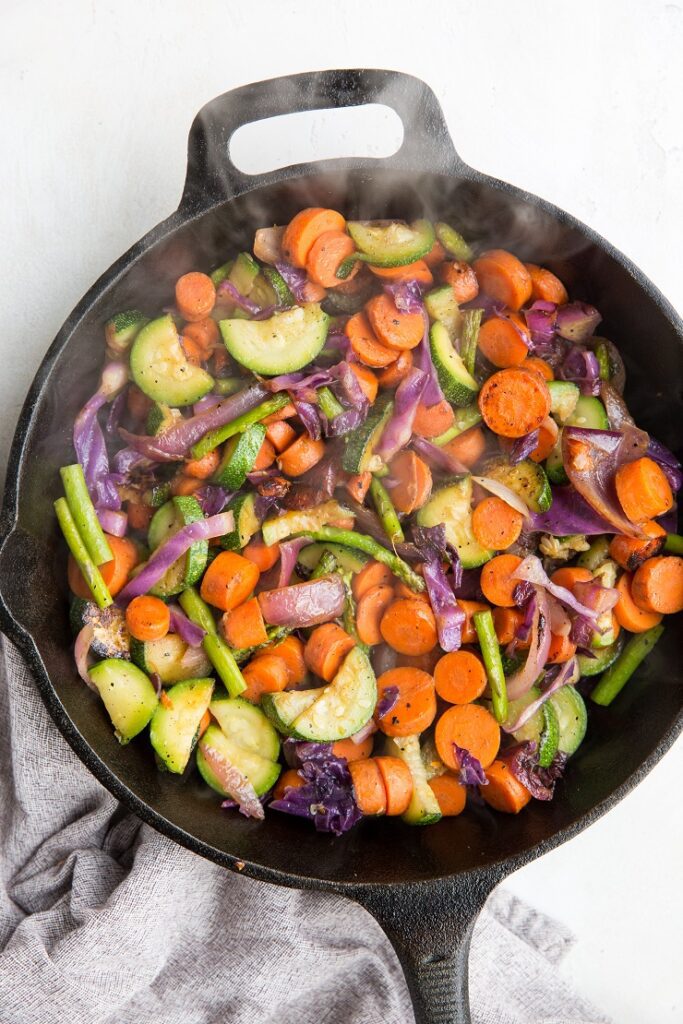Sautéing is a quick and flavorful cooking technique for meat and vegetables, but it can be a daunting task for beginners. Choosing the right pan and oil, preparing ingredients properly, and not overcrowding the pan are key to achieving a perfect sear. A heavy-bottomed pan with even heat distribution and oils with high smoke points, such as vegetable, canola, grapeseed, and peanut oil, are recommended. Meat should be seared on a hot pan and flipped once a crust has formed, while vegetables should be added in a single layer and not overcrowded, with easily burnt vegetables added later in the cooking process.
Sautéing Your Way to a Delicious Meal: How to Perfectly Sear Meat and Veggies Every Time
Introduction
Sautéing is an essential skill for any home cook. It involves frying food quickly in a shallow pan, over high heat, while stirring constantly. This allows for a flavorful and evenly cooked meal in no time.
However, achieving the perfect sauté can be a daunting task for beginners. In this article, we will explore the tips and tricks for sautéing meat and veggies to perfection every time.
Choosing the Right Pan
The first tip for a successful sauté is choosing the right pan. A good quality, heavy-bottomed pan is ideal for even heat distribution, ensuring that your food evenly cooks without burning.
Also, the size of the pan matters. A pan that is too big for your ingredients will cause uneven cooking, while a pan that is too small will crowd the ingredients, resulting in steaming instead of searing. A general rule of thumb is to choose a pan that is large enough to fit all your ingredients in a single layer.
Choosing the Right Oil
Oil is another essential ingredient for sautéing. It adds flavor and helps prevent sticking. However, not all oils are created equal when it comes to sautéing.
Oils with high smoke points are ideal for sautéing. Smoke point refers to the temperature at which an oil begins to smoke and break down, causing a burned, bitter flavor. Some oils with high smoke points include vegetable, canola, grapeseed, and peanut oil.
Preparing Your Ingredients
Properly preparing your ingredients before sautéing is key to achieving the perfect sear. Meat and veggies should be thoroughly washed, dried, and cut into uniform pieces for even cooking.
Also, patting the meat or veggies dry with a paper towel before sautéing prevents excess moisture, ensuring that the food browns and sears properly.
Sautéing Meat
When sautéing meat, it’s essential to start with a hot pan. This helps create a crust on the meat and prevents sticking. Add a thin layer of oil to the pan, then add the meat.
It’s important not to overcrowd the meat in the pan. If the pan is too crowded, the meat will steam instead of sear, resulting in a bland, rubbery texture.
Once the meat has a crust on one side, flip it over and repeat the process. Be sure to stir constantly throughout the cooking process to prevent sticking and ensure even cooking.
Sautéing Veggies
Sautéing veggies is similar to sautéing meat, but there are a few key differences. Unlike meat, veggies don’t need to be seared as long, as they cook relatively quickly.
Start with a hot pan and a thin layer of oil, then add the veggies. Be sure not to overcrowd the pan, as this will result in steaming instead of searing.
Also, certain veggies like onions and garlic can burn quickly, so add them later in the cooking process, once other vegetables have already begun to soften.
Conclusion
Sautéing is a versatile and easy cooking technique that can result in delicious meals. By choosing the right pan and oil, preparing your ingredients properly, and following the tips for sautéing meat and veggies, you can perfectly sear your food every time.
Remember to practice and experiment with different ingredients and seasonings to find your perfect sauté. Happy cooking!
